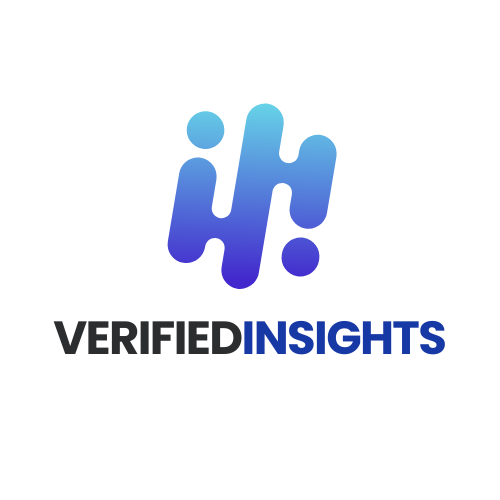In today’s digital landscape, cloud computing has become a cornerstone for businesses of all sizes. As organizations migrate their data and applications to the cloud, ensuring data protection remains a top priority. Protecting sensitive information in a cloud environment presents unique challenges that require robust security measures.
Effective data protection strategies don’t just safeguard against cyber threats—they also help companies comply with regulatory standards. Implementing encryption, access controls, and continuous monitoring are essential components of a comprehensive security framework. By prioritizing data protection, businesses can harness the benefits of cloud computing while maintaining the integrity and confidentiality of their most valuable assets.
Overview Of Data Protection In Cloud Computing
Data protection in cloud computing ensures the confidentiality, integrity, and availability of information stored and processed in cloud environments. Organizations implement various strategies to safeguard data against unauthorized access, breaches, and loss.
Key Data Protection Measures
- Encryption
Encrypting data both at rest and in transit secures information from unauthorized access and interception.
- Access Controls
Implementing role-based access controls restricts data access to authorized personnel only, minimizing internal threats.
- Data Backup and Recovery
Regular backups and robust recovery plans ensure data can be restored promptly in case of loss or corruption.
- Continuous Monitoring
Ongoing surveillance of cloud environments detects and responds to suspicious activities in real-time.
Compliance and Regulatory Standards
Adhering to standards like GDPR, HIPAA, and ISO/IEC 27001 ensures that data protection practices meet legal and industry requirements.
| Technology | Description |
|---|---|
| Tokenization | Replacing sensitive data with non-sensitive equivalents to protect information. |
| Data Masking | Hiding sensitive data elements to prevent exposure during processing or storage. |
| Identity Management | Managing user identities and authentication to control data access. |
Implementing these technologies enhances the security framework of cloud computing environments, ensuring robust data protection.
Key Challenges

Cloud computing presents several data protection challenges that organizations must address to ensure the security of their information assets.
Data Breaches
Data breaches occur when unauthorized individuals gain access to sensitive information stored in the cloud. Common causes include weak authentication mechanisms, vulnerabilities in cloud infrastructure, and misconfigured security settings. According to a 2023 report by IBM, the average cost of a data breach in the cloud is $4.24 million. Effective measures to prevent breaches involve implementing robust encryption, multi-factor authentication, and regular security assessments.
Data Loss
Data loss refers to the unintended or accidental deletion, corruption, or unavailability of data stored in cloud environments. Causes include hardware failures, software bugs, human errors, and natural disasters. A study by the Cloud Security Alliance in 2023 found that 30% of organizations experienced significant data loss incidents in the past year. To mitigate data loss, organizations should maintain comprehensive backup solutions, establish disaster recovery plans, and ensure data redundancy across multiple geographic locations.
Data Protection Strategies
Effective data protection strategies are essential for securing information in cloud environments. Organizations implement various measures to safeguard their data from unauthorized access, breaches, and loss.
Encryption
Encryption transforms data into unreadable formats, ensuring confidentiality both at rest and in transit. Organizations utilize advanced encryption standards, such as AES-256, to protect sensitive information. Data at Rest Encryption secures stored data, while Data in Transit Encryption safeguards data moving between systems. Key management practices, including regular key rotation and secure storage, enhance encryption effectiveness. For example, cloud providers like AWS offer server-side encryption with key management services to ensure data remains protected against unauthorized access.
Access Control
Access control regulates user permissions and ensures that only authorized individuals can access specific data and resources. Role-Based Access Control (RBAC) assigns permissions based on user roles, minimizing unnecessary access privileges. Multi-Factor Authentication (MFA) adds an additional security layer by requiring multiple verification methods before granting access. Implementing the Principle of Least Privilege ensures users have only the permissions essential for their roles, reducing the risk of data breaches. Additionally, regular access reviews and audits help maintain appropriate access levels and identify potential security gaps.
Compliance And Regulations
Cloud computing providers must adhere to various compliance and regulatory standards to ensure data protection. Key regulations include the General Data Protection Regulation (GDPR), which mandates strict data privacy controls for organizations operating within the European Union. The Health Insurance Portability and Accountability Act (HIPAA) requires healthcare entities in the United States to safeguard patient information. Additionally, the International Organization for Standardization’s ISO/IEC 27001 standard outlines best practices for information security management systems.
Regulatory Requirements
Organizations using cloud services must comply with industry-specific regulations to avoid legal penalties. Compliance requirements typically involve:
- Data Privacy: Ensuring personal and sensitive information is protected through encryption and access controls.
- Data Residency: Storing data within specific geographic locations as mandated by local laws.
- Audit Trails: Maintaining detailed logs of data access and modifications to facilitate audits and investigations.
- Incident Reporting: Promptly notifying relevant authorities and affected individuals in the event of a data breach.
Compliance Certifications
Cloud providers obtain various certifications to demonstrate their adherence to regulatory standards. Common certifications include:
- ISO/IEC 27001: Validates an organization’s information security management system.
- SOC 2: Assesses controls related to security, availability, processing integrity, confidentiality, and privacy.
- FedRAMP: Ensures cloud services meet the security requirements of U.S. federal agencies.
Data Localization
Data localization laws require that data be stored and processed within specific jurisdictions. Compliance strategies involve:
- Multi-Region Deployment: Utilizing cloud infrastructure across multiple regions to meet localization requirements.
- Local Data Centers: Partnering with cloud providers that offer data centers in required locations.
- Data Segmentation: Separating data based on geographic regions to comply with diverse localization laws.
Compliance Management Tools
Organizations implement various tools to manage and monitor compliance effectively:
- Automated Compliance Monitoring: Tools that continuously assess cloud environments against regulatory standards.
- Policy Management: Software that helps define, enforce, and update compliance policies.
- Reporting and Analytics: Platforms that generate detailed reports to demonstrate compliance during audits.
Penalties for Non-Compliance
Failure to comply with regulations can result in significant financial and reputational damage. Common penalties include:
- Fines: GDPR violations can incur fines up to €20 million or 4% of annual global turnover, whichever is higher.
- Legal Actions: Non-compliance may lead to lawsuits and legal fees.
- Operational Restrictions: Authorities can impose restrictions on data processing activities until compliance is achieved.
Best Practices for Ensuring Compliance
To maintain compliance, organizations should adopt the following practices:
- Regular Audits: Conducting periodic audits to identify and address compliance gaps.
- Employee Training: Educating staff on regulatory requirements and data protection best practices.
- Vendor Management: Ensuring that third-party cloud providers maintain compliance with relevant standards.
- Continuous Monitoring: Implementing real-time monitoring to detect and respond to compliance issues promptly.
By adhering to compliance and regulatory standards, organizations enhance their data protection strategies, mitigate legal risks, and build trust with stakeholders.
Future Trends
Advancements in data protection for cloud computing continue to evolve, addressing emerging threats and enhancing security measures.
Artificial Intelligence and Machine Learning
AI-driven security systems detect anomalies by analyzing vast amounts of data in real-time. Machine learning algorithms identify patterns, enabling proactive threat prevention and reducing response times to incidents.
Zero Trust Architecture
Zero Trust models enforce strict access controls, assuming no user or device is trustworthy by default. Continuous verification of identities and device integrity minimizes unauthorized access risks, enhancing overall security posture.
Homomorphic Encryption
Homomorphic encryption allows data processing without decryption, maintaining data privacy during computations. This technique supports secure data analysis in cloud environments, ensuring sensitive information remains protected.
Quantum-Resistant Cryptography
Quantum computing threatens current encryption standards. Quantum-resistant algorithms develop encryption methods resilient to quantum attacks, safeguarding data against future technological advancements.
Enhanced Automation and Orchestration
Automated security workflows streamline threat detection and response. Orchestration tools integrate various security measures, reducing manual intervention and improving efficiency in managing data protection.
Blockchain Integration
Blockchain technology ensures data integrity through immutable records. Integrating blockchain with cloud services provides transparent and tamper-proof data management, enhancing trust and security.
Edge Computing Security
With the rise of edge computing, data processing occurs closer to data sources. Implementing robust security measures at the edge prevents data breaches and ensures protection across distributed networks.
Privacy-Enhancing Technologies
Technologies like differential privacy and federated learning enhance data privacy by minimizing data exposure. These methods allow organizations to utilize data insights without compromising individual privacy.
Regulatory Evolution
Data protection regulations continue to adapt to technological changes. Anticipating stricter compliance requirements, organizations invest in comprehensive security frameworks to meet evolving legal standards.
Multi-Cloud Security Strategies
Organizations adopt multi-cloud environments to leverage diverse services. Implementing unified security strategies across multiple clouds ensures consistent data protection and mitigates risks associated with cloud diversity.
Enhanced Identity and Access Management
Future trends emphasize robust identity verification and access management solutions. Biometrics and decentralized identity protocols provide secure and user-friendly authentication methods, strengthening access controls.
Data Localization and Sovereignty
Increasing emphasis on data localization requires storing data within specific jurisdictions. Adhering to these requirements ensures compliance with regional laws and enhances data protection strategies.
Internet of Things (IoT) Security
As IoT devices proliferate, securing data generated by these devices becomes critical. Implementing comprehensive IoT security measures prevents vulnerabilities and protects data across interconnected systems.
Continuous Compliance Monitoring
Automated compliance monitoring tools ensure ongoing adherence to data protection regulations. Continuous assessment and real-time reporting facilitate proactive management of compliance obligations.
Advanced Backup and Recovery Solutions
Future data protection includes sophisticated backup and recovery technologies. Solutions like instant recovery and automated failover systems enhance data availability and resilience against disruptions.
By integrating these future trends, organizations strengthen their data protection strategies in cloud computing, ensuring robust security and compliance in an ever-evolving digital landscape.
Conclusion
Securing data in cloud environments remains a critical priority for businesses navigating digital transformation. By leveraging advanced encryption, robust access controls, and continuous monitoring, organizations can effectively safeguard their sensitive information against evolving threats. Adhering to compliance standards not only mitigates legal risks but also builds trust with stakeholders, reinforcing the organization’s commitment to data protection.
As technology advances, integrating emerging solutions like AI-driven security and Zero Trust Architecture will further enhance defense mechanisms. Staying proactive and adaptable ensures that businesses can harness the full potential of cloud computing while maintaining the integrity and confidentiality of their valuable data. Embracing these strategies positions organizations to thrive in an increasingly cloud-centric landscape.





